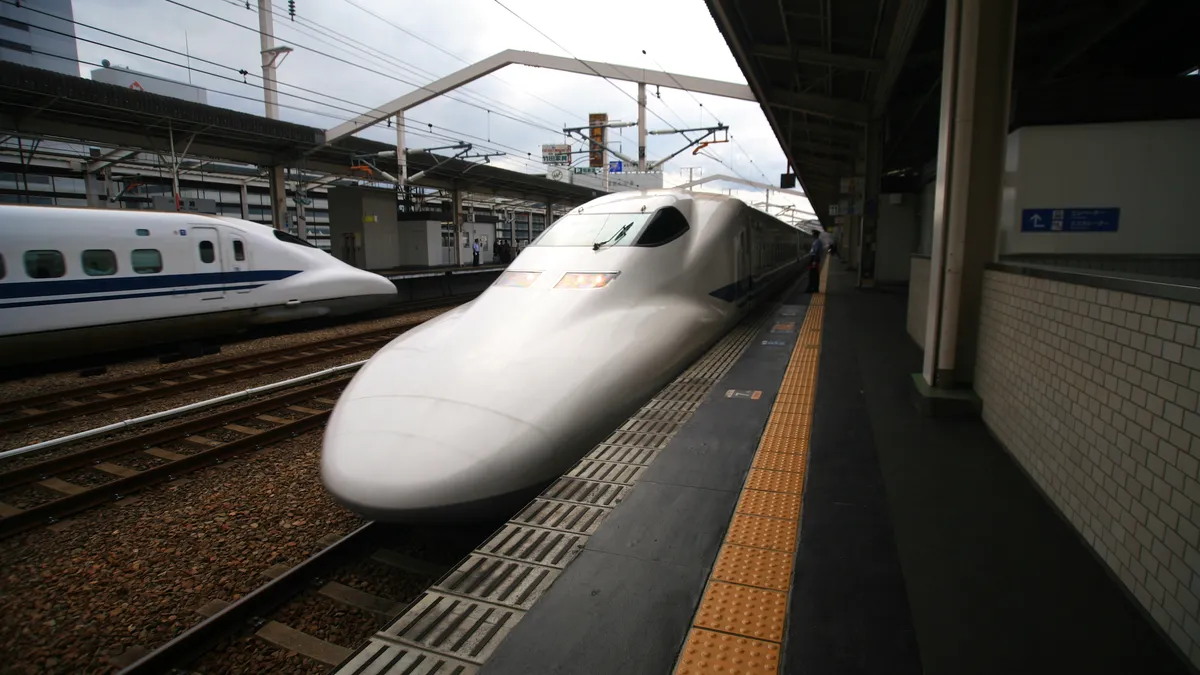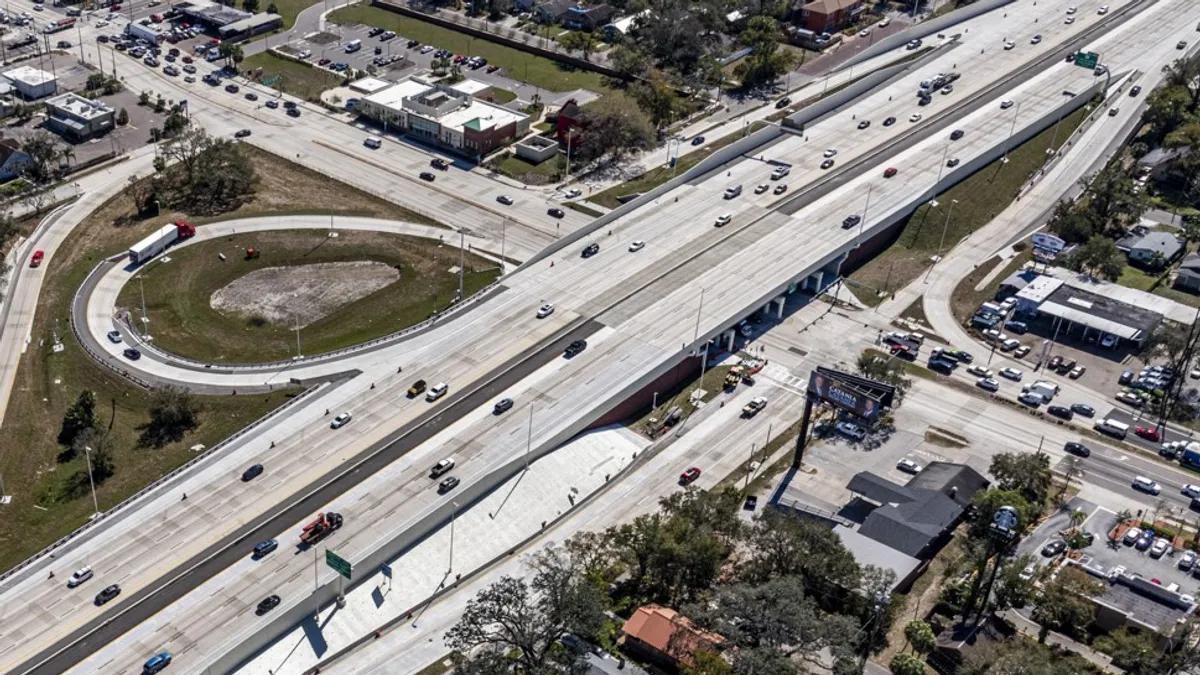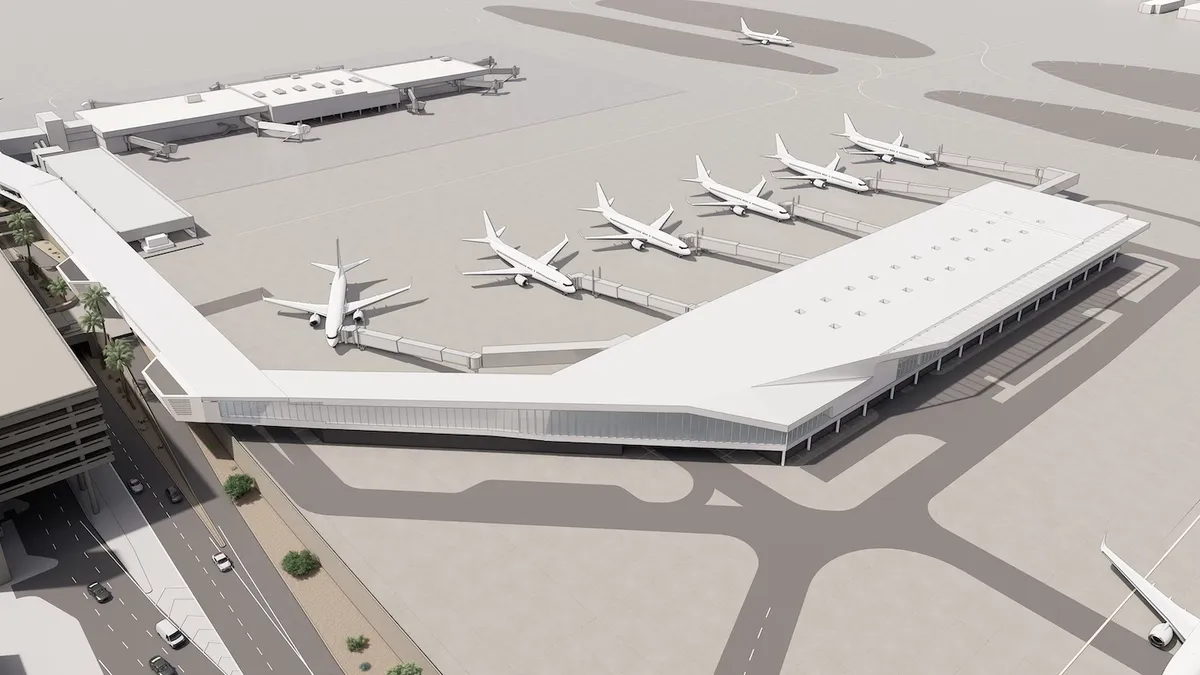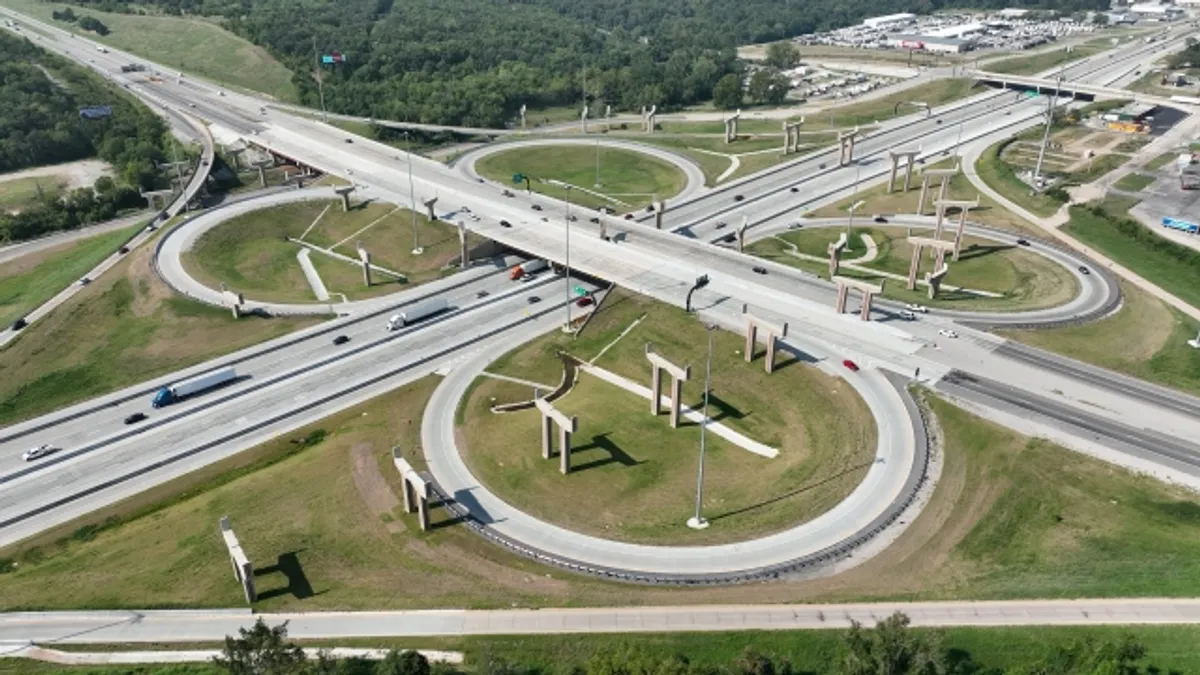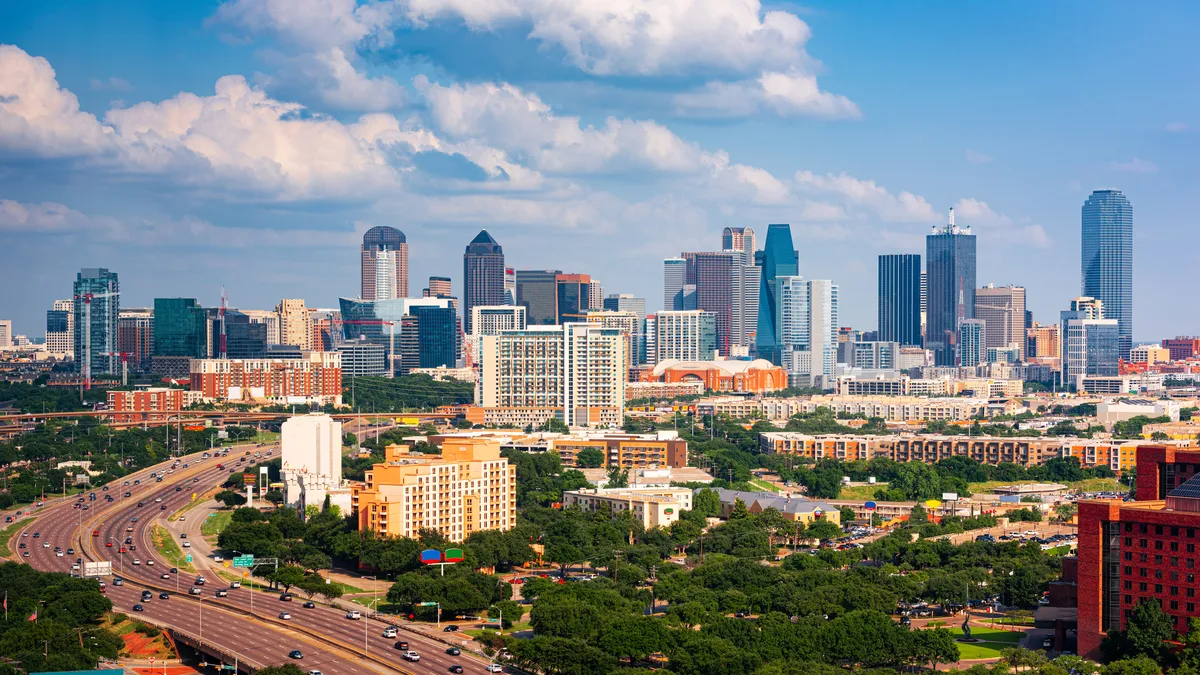It would be difficult to find transit experts today who, upon reflection, would say construction for the California bullet train has been well-planned or well-executed. In fact, some consider the high-speed rail project a certified boondoggle.
When Californians voted “yes” on Proposition 1A, also known as the Safe, Reliable High-Speed Passenger Train Bond Act for the 21st Century, in November 2008, the bullet train’s estimated cost was $33 billion. The act authorized the issuance of nearly $10 billion of general obligation bonds, $9 billion of which would go toward planning and construction of a 500-mile-plus, high-speed rail system between San Francisco and Anaheim. Another $950 million of bonds would be sold to pay for other rail line improvements in order to provide connectivity to the bullet train. Eventually, the line was supposed to extend as far south as San Diego.
The first phase was to be complete by 2020 and, in addition to bond revenue, was supposed to be funded by a mix of federal funds, local cost-sharing and public-private partnerships (P3s), all of which totaled about $35 billion.
That was the plan.
Fast forward to more than a decade later, and the project has a price tag of about $77 billion — with the potential to increase to $100 billion — and is projected to be approximately 13 years behind schedule. The project’s governing agency, the California High-Speed Rail Authority, has been plagued with allegations of mismanagement and even downright deception, and has had to endure a series of investigative questioning sessions by state lawmakers and a damning state audit.
It came as no surprise, then, that one of California Gov. Gavin Newsom’s first acts upon entering office earlier this year was to suspend construction on all but a 119-mile segment of the project from Merced, California, to Bakersfield, California, in the state's Central Valley, a far cry from the project that transportation officials — and voters — envisioned in 2008.
But there are lessons to be learned here, especially for other authorities thinking about pursuing a high-speed rail project.
Have finances worked out at the beginning
"The fact is," said Joseph Schofer, professor of civil and environmental engineering at Northwestern University, "from the start, they didn't have the dollars to pay for this. They were expecting that they would be able to amass those dollars along the way. I guess I'm not surprised it hasn't worked out."
Adding to the rail's financial drama, almost immediately after Newsom announced that the Merced-Bakersfield line would be the only piece of the bullet train's route moving forward for now, the Federal Rail Administration announced it was canceling a $929 million grant for that segment because, according to the agency, there was no way it was going to meet an agreed-upon completion deadline of 2022.
That condition didn't just pop out of the blue, however. Standard FRA agreements usually include a right to rescind, said former acting administrator and chief counsel for the FRA, Juan Reyes, who is now in private practice at Seyfarth and Shaw LLP. "[CHSRA] kind of put themselves in that situation," he said, noting that it had agreed funding was contingent on meeting certain milestones.
The authority has pushed back against that decision, claiming that the FRA has no clear basis to declare the project a failure. However, even the state auditor's report said that crews would have to double their pace of construction to meet the FRA's 2022 deadline, which is unlikely given the rail's current rate of progress. Barring that, the authority would also have to pay back $3.5 billion of federal funds it's already received.
In the CHSRA's defense, it's not that unusual that there are significant cost estimate errors for megaprojects like these, Schofer said. On the other hand, he added, everybody that has experience with these types of projects knows that and, arguably, should either have prepared taxpayers, lawmakers and other constituencies for those uncertainties, or built in a budgetary "cushion."
In its most recent project update, the CHSRA reported that its cost estimate for the Merced-Bakersfield line had grown about $1.8 billion to more than $20 billion. The CHSRA's financial solution now is to complete the shorter route successfully and prove it as a concept, which will hopefully draw enough investment to finish the original Phase 1 section from San Francisco to Anaheim.
According to the authority, available and authorized funds projected through 2030 total just $9.4 billion. If expected cap-and-trade revenue comes through as expected, that amount could increase to $18.4 billion, which the agency said is enough to pay for the rest of the Merced-Bakersfield route as long as future funding decisions land in its favor and assuming the FRA reconsiders and reinstates its grant money.
One way that the authority is trying to trim costs is by bringing more of the work in-house for state employees to manage. Recent reports have taken the CHSRA to task for allowing overpaid and underperforming consultants to dominate management and oversight of the rail project.
Don't let the project turn into a game of political football
A publicly funded project costing tens of billions of dollars is sure to become a lightning rod for controversy, and the bullet train is no exception. Support and opposition has mostly fallen along party lines, with Republicans and other fiscal conservatives calling for a halt to out-of-control cost increases and spending, while Democrats, for the most part, have hung in there, touting environmental and other benefits.
But as with most issues, playing politics can do harm.
"If you actually allow the politicians rather than the technical people to be in charge of a project, then you're in big trouble," said Norman Anderson, chairman and CEO of CG/LA Infrastructure. If the public bureaucracy is strong enough, it can withstand "assaults" by politicians, he said. But U.S. public bureaucracy, unlike a place such as Spain where the high-speed rail has weathered many shifts in political winds, "can't withstand a politician coughing," he said.
Taxpayers also are subject to the pressures of politics but only for so long, as evidenced by the lack of public support right before Newsom scaled back the line. "I think what happened in California was that people waited a long time and watched a lot of money being spent and didn't see any product, so the political energy for it deteriorated," Schofer said.
However, Randal O'Toole, a senior fellow at the Cato Institute, believes that another political shift could put California back on the road to spending beyond its means again.
If Democrats take the White House and Congress in 2020, he said, they will probably "start throwing money" at California to revive the project. "Gov. Newsom didn't say, 'We're never going to build it,'" O'Toole said. "He said, 'If money becomes available, we'll start building it again.'"
In Florida and Texas, one thing that has kept most Republicans and other fiscal conservatives at bay is that the Texas Central line between Houston and Dallas, as well as the proposed Virgin Trains USA (formerly known as Brightline) between Tampa and Orlando are privately financed.
They also have a better shot at success, according to Schofer, because investors have skin in the game.
"Private investors have a better capability and, literally, a mandate to look at the risks, address the risks and decide whether or not to put money against it," he said. For publicly funded projects, there is slight vetting by the small percentage of the public that track those kinds of things but most don't have the capability to do due diligence. "Private sector investors are much more serious about risk management," Schofer said.
Consider whether the project is necessary
For travel today, it's hard to beat the efficiency, convenience and relatively low cost of airplanes, O'Toole said. Less infrastructure is required for airports, he said, and the same facilities can accommodate small and large planes for long-distance and short-hop segments. In comparison, rail infrastructure is costly and must be extremely precise if a high-speed line is going to work.
As for claims that high-speed rail is more environmentally friendly, O'Toole said, operation of a high-speed rail line doesn't effectively counter the environmental cost of building it.
So what are the chances that any U.S. high-speed rail line will be successful? It depends.
For the California bullet train, the chances are about zero, Anderson said. "And the chances have been zero since about 2014," he said. "Somebody just needs to have the guts to put a stake in this thing and kill it. I don't know where they think they're going to get funding going forward. It doesn't make any sense. It's a bad model for the country."
But it looks like Texas and California could fare better.
In addition to the high levels of oversight on which private investors will most likely insist, the Texas project, Anderson said, is building its line between two thriving metros that aren't too far apart and are not separated by imposing terrain like the California bullet train. Instead, the two cities are a set of "perfect pairs" like Boston and New York City or Washington, D.C., and New York City.
Also, developers are planning major projects at both ends of the route that will serve as destinations unto themselves, he said, or "places where people want to be," rather than simply a train station.
In Florida, Anderson said, high-speed rail developers should have it easier because the route will follow existing freight line rights of way. And, again, the public is not on the hook for financing any part of it.
But the Florida and Texas lines won't, Schofer said, provide as much insight into the possibilities of high-speed rail as the California line could, even if the two are wildly successful.
"What is a shame, he said," is that we lost, or we've deferred for a long period of time, what could have been a really brilliant market test. I think we won't learn very much from it, at least right now."


